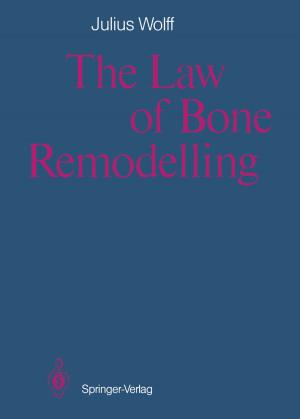Hirsutism
Nonfiction, Health & Well Being, Medical, Specialties, Dermatology, Internal Medicine, Endocrinology & Metabolism| Author: | P. Mauvais-Jarvis, F. Kuttenn, I. Mowszowicz | ISBN: | 9783642815713 |
| Publisher: | Springer Berlin Heidelberg | Publication: | December 6, 2012 |
| Imprint: | Springer | Language: | English |
| Author: | P. Mauvais-Jarvis, F. Kuttenn, I. Mowszowicz |
| ISBN: | 9783642815713 |
| Publisher: | Springer Berlin Heidelberg |
| Publication: | December 6, 2012 |
| Imprint: | Springer |
| Language: | English |
In the past 10 years hirsutism has been the object of a considerable number of fundamental studies. It provides endocrinologists with an experimental model for the investigation of androgen secretion, metabolism and mechanism of action. Plasma androgen assay, free testosterone measurement, hepatic and extrahepatic androgen metabolic clearance and androgen metabolism in the skin are the different steps which were studied by many groups and represent valuable parameters of the mechanisms of hirsutism. Determination of the origin of androgen oversecretion has become easier by technical progress in differential effiuent venous catheterism, which makes it possible to compare androgens in adrenal or ovarian effiuent veins to their peripheral levels, and to determine the ovarian or adrenal source of the androgen oversecretion as well as the side responsible, essential in the case of tumors. The study of androgen metabolism and the discovery of androgen receptors in the skin confIrm the latter as an actual target cell for androgens. This target cell uses the circulating active androgen, i. e. , testosterone and can also metabolize local inactive androgens into active ones. This is the case of androstenedione and dehy droepiandrosterone which are the two main androgens secreted in women, since women secrete very little testosterone. The capacity of the skin to transform inactive androgens into active ones varies from one individual to another. That would support the concept of variable skin receptivity from one woman to another and from one ethnic group to another.
In the past 10 years hirsutism has been the object of a considerable number of fundamental studies. It provides endocrinologists with an experimental model for the investigation of androgen secretion, metabolism and mechanism of action. Plasma androgen assay, free testosterone measurement, hepatic and extrahepatic androgen metabolic clearance and androgen metabolism in the skin are the different steps which were studied by many groups and represent valuable parameters of the mechanisms of hirsutism. Determination of the origin of androgen oversecretion has become easier by technical progress in differential effiuent venous catheterism, which makes it possible to compare androgens in adrenal or ovarian effiuent veins to their peripheral levels, and to determine the ovarian or adrenal source of the androgen oversecretion as well as the side responsible, essential in the case of tumors. The study of androgen metabolism and the discovery of androgen receptors in the skin confIrm the latter as an actual target cell for androgens. This target cell uses the circulating active androgen, i. e. , testosterone and can also metabolize local inactive androgens into active ones. This is the case of androstenedione and dehy droepiandrosterone which are the two main androgens secreted in women, since women secrete very little testosterone. The capacity of the skin to transform inactive androgens into active ones varies from one individual to another. That would support the concept of variable skin receptivity from one woman to another and from one ethnic group to another.















